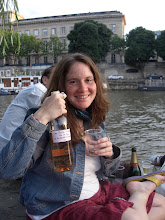WINE-OH ACADEMY
I have decided to start a Wine-Oh Academy section to this blog. This section will focus on learning more about the wine making process. I am starting with the book “Exploring Wine” by Steven Kolpan, Brian H. Smith, and Michael A. Weiss. This book was put out by The Culinary Institute of America. This book reads like a textbook and includes everything you want to know about wine. I am going to read different sections and sum up what I have learned.
I will also be using other books and giving them credit when I do.
So let’s start:
What exactly is wine? There are many different types of wine and it can become confusing or overwhelming to a consumer. You can buy wine with bubbles or without. You can age certain wines and some wines are meant to be consumed within a few years. Some wines are sweet and some wines are dry. Certain wines are fortified and others are aromatized. All these differences change the grapes and processes used.
What influences the final tasting notes of a wine? When you taste a wine, your perception can be changed by the grape variety used, the climate of the vineyard during growing season, the soil of the vineyard and the winemaker.
We start with the wine making process. Wine has been around so long that people just correlate grapes with wine. Why grapes? Why didn’t our ancestors use other types of fruit?
Grapes have a proper ratio of sugar to liquid. Growing grapes also have a layer of dust, or bloom, which covers the grape skin. This bloom is made up of yeast cells. A majority of these yeast cells are called Saccharomyces ellipsodium, which is considered a great yeast strain for making the grape sugars turn to alcohol.
What makes up wine? Wine is the fermented juice of the grapes. Wine is born when the sugar of the grapes turns into alcohol through yeast action.
The modern approach to making wine is composed of five main processes. These include, in chronological order:
1) Pressing the grapes
2) Control the fermentation process
3) Malolactic fermentation
4) Aging
5) Clarification
I will discuss each of these processes in future blog posts.
As you can see, the wine making process is a complex blend of science and art. I hope to make clear this process in future posts. I have a lot to learn as well.








No comments:
Post a Comment